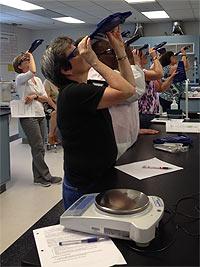Turning Data into Action
By Jim Jones
I’ve always been amazed by the power of data. Given the right information at the right time, we have the power to transform our lives. During my time at EPA, we have worked with companies, manufacturing facilities, and professional organizations to reduce or eliminate the generation of hazardous substances and prevent pollution – a good thing for industry and for the American public. As part of our efforts to create a more sustainable future, we provide information to the public about chemicals, chemical releases, and pollution prevention practices.
One of our longstanding tools for providing this information is the Toxics Release Inventory (TRI). The TRI collects information from industrial facilities on which toxic chemicals they’re using and how much of each is released into the environment. Information is power and time after time communities have used this information to effect change and take action to protect families and the environment. Making these data publicly available also gives companies an incentive to reduce pollution, and we’re seeing real results.
Over the past 15 years or more, pharmaceutical firms have implemented a wide array of green chemistry practices in their manufacturing processes. The environmental benefits that these green chemistry practices have had, and continue to have, are evident in the TRI information they submit to us. Between 2002 and 2014, the quantities of toxic chemicals reported annually by pharmaceutical manufacturing facilities to our TRI Program declined steadily by 58%.
Similar trends are observed in the TRI information submitted by facilities in the automotive manufacturing sector. Between 2004 and 2014, the quantities of toxic chemical releases to the environment and reported annually by automotive manufacturing facilities declined by 56%. This occurred at the same time that production within the automotive sector rose sharply. Despite the increase in production, since 2009, the quantities of toxics reported as released to the environment or otherwise managed as waste have not increased.
Data drives informed and empowered decision making. By leveraging TRI data to help identify industries that are practicing or can benefit from implementing green chemistry practices, we’re taking tangible steps to work with industry to protect human health and the environment.
- To learn more about TRI visit: www.epa.gov/tri.
- To learn more about pollution prevention visit: www.epa.gov/p2
- To register for the October 2016 National Training Conference TRI at 30: Working Together to Reduce Toxic Releases, visit: https://www.epa.gov/toxics-release-inventory-tri-program/2016-tri-national-training-conference












